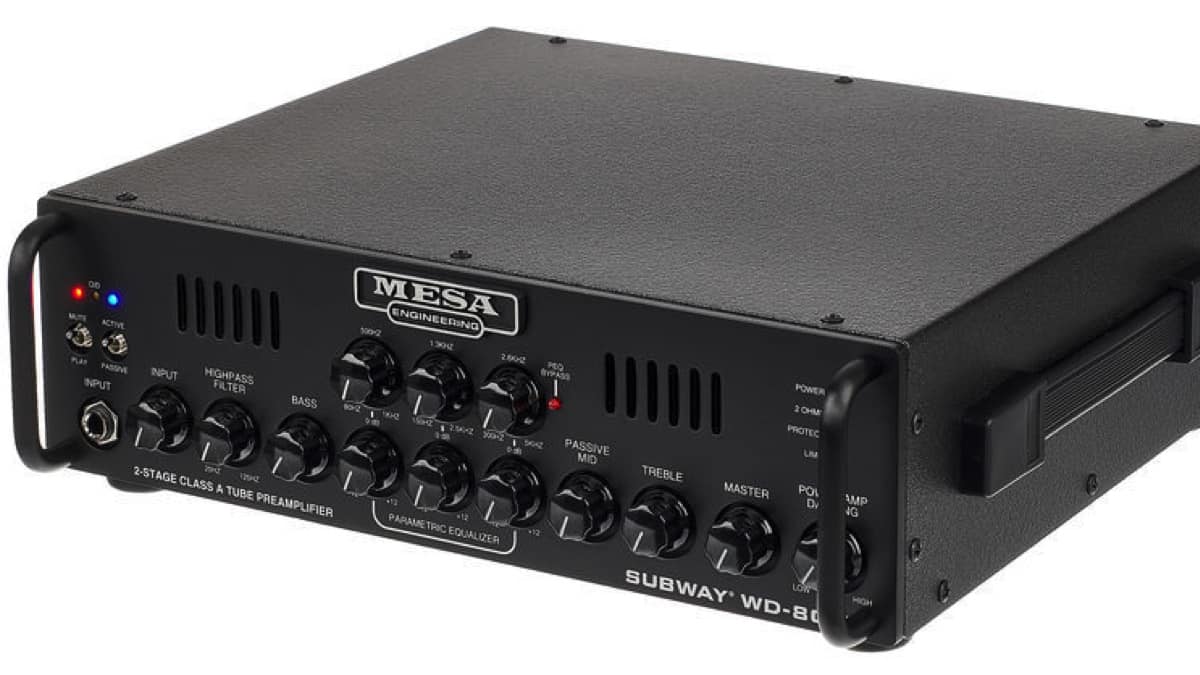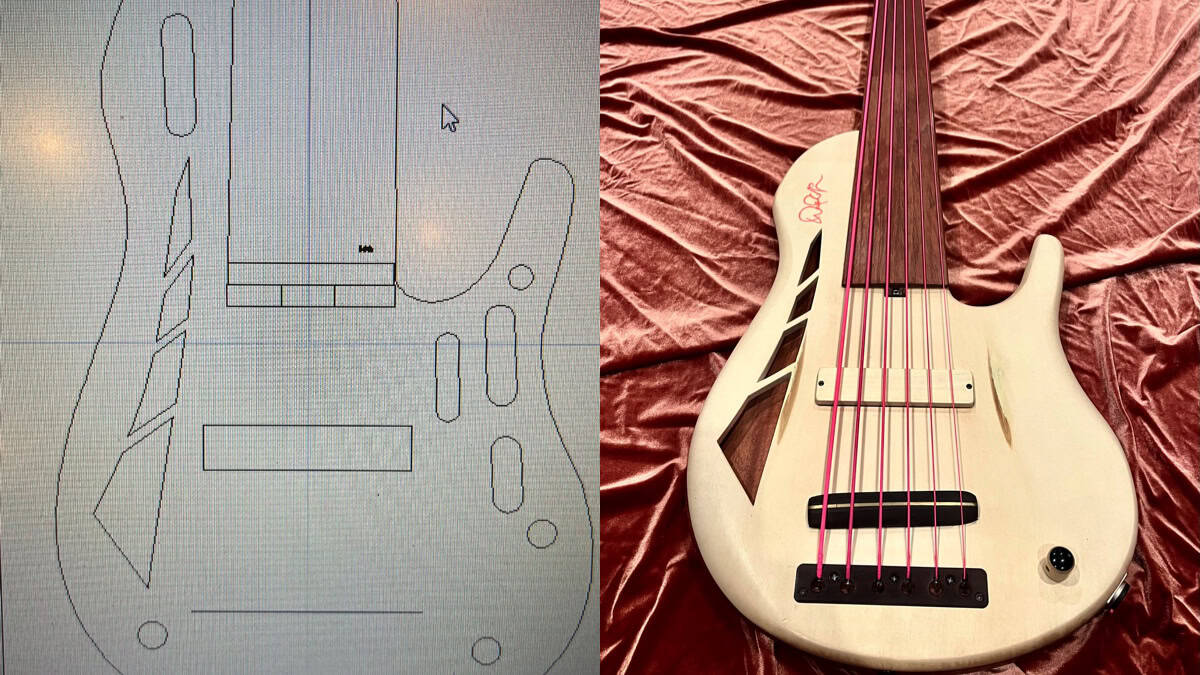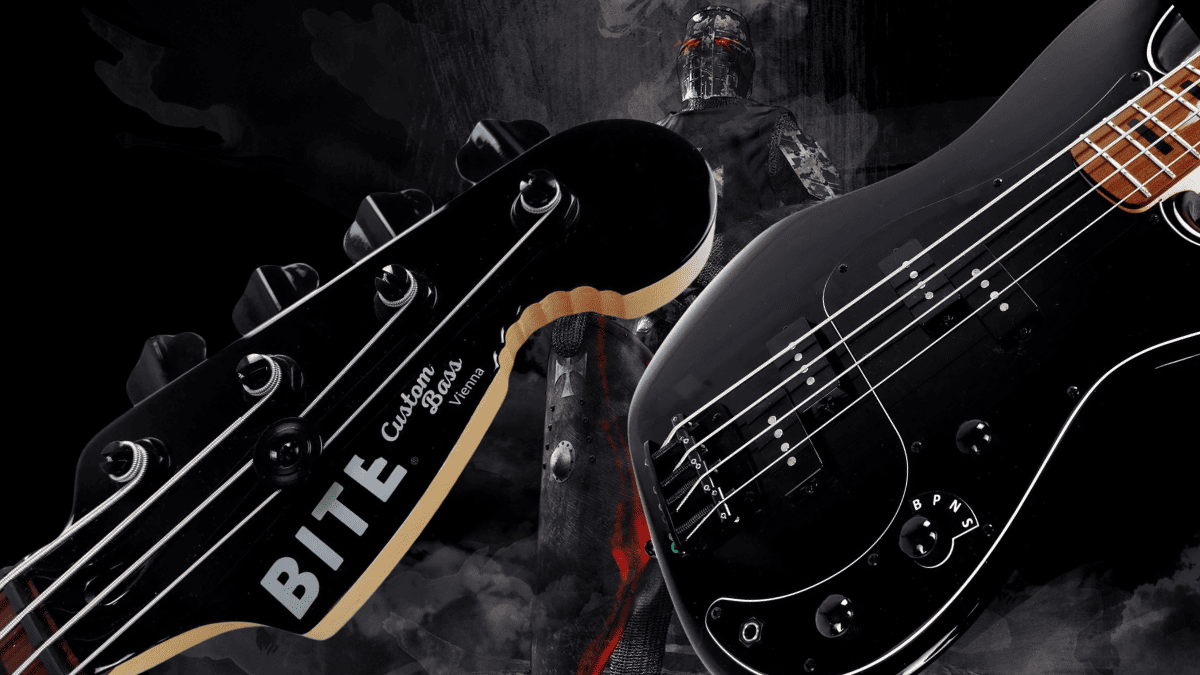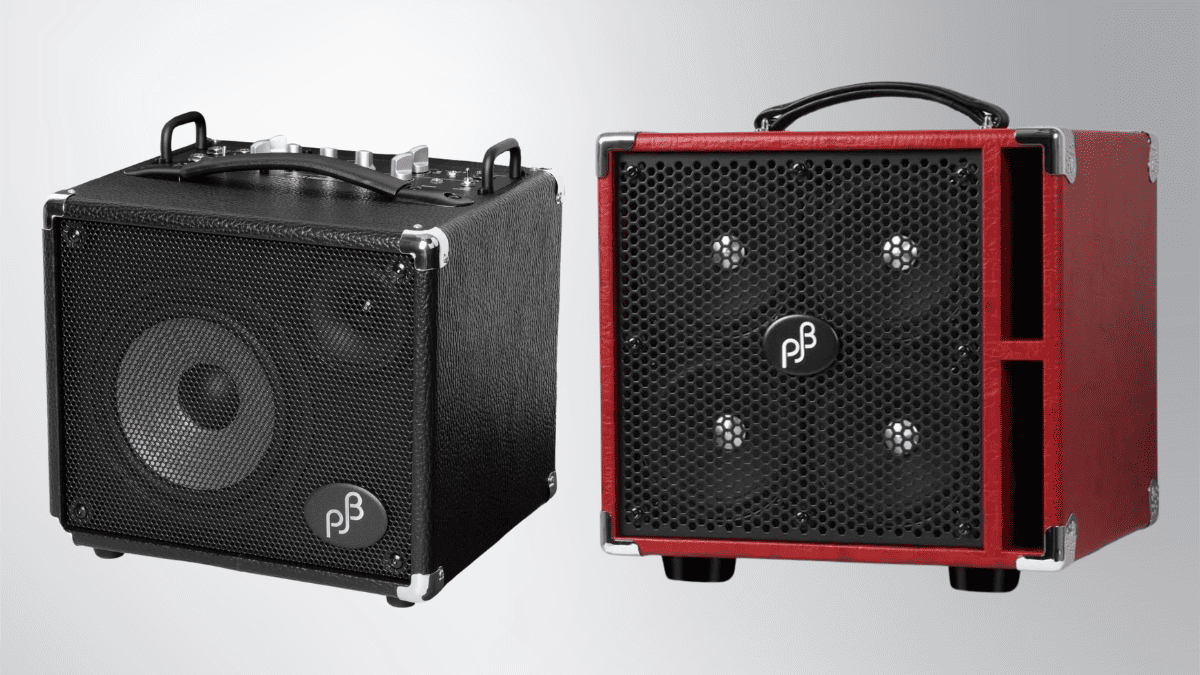Gear Reviews
Mesa/Boogie Subway WD-800 Head and Subway 2X12 Vertical Cabinet Review

Review of the Mesa/Boogie Subway WD-800 Head and Subway 2X12 Vertical Cabinet
Mesa Engineering long ago earned its reputation as one of the industry leaders in the bass amp world, from their monster D180 and 400+ tube amps of the early to mid 80’s, to some of their killer heads in the 90’s and early 00’s like the Mpulse 600, M-2000 and M6/M9 series. Their current class D killers, the D800 and D800+ have become instant classics in that crowded field of lightweight contenders.
Mesa fans have good reason to expect that when the company releases a new product, it will be smartly engineered, reliable, and will excel at doing what it was designed to do.
Well, hot on the heels of their successful D800 and D800+ amplifiers, Mesa has most recently released its new addition to the Subway line: the WD-800.

The 800 watt, 2 ohm stable WD-800 is no doubt reminiscent of one of Mesa’s most iconic and timeless amps, the Walkabout. It has a similar 3 band semi-parametric EQ and knob layout, and although it’s not exactly meant to be a “Walkabout with a class D power amp” the company says “the goal of the WD-800 was to incorporate the voice and feel aspects of the Walkabout while avoiding the limitations that the Walkabout platform bumped up against (lack of power, headroom, low end bloom, squishiness when driven hard, 2 ohm operation, and the noise level of the fan.”The result is a great sounding, versatile bass head with lots of clarity and a stout class D power section.
Like all Mesa products, the WD-800 feels solid and substantial, without seeming overbuilt or bulky.
It’s not the smallest class-D head on the market, but its numerous features more than makes up for its size. I was particularly impressed with the amp’s EQ capabilities, boasting 3 bands of semi parametric EQ control in addition to a dedicated Bass, Passive Mid (which notably is cut-only), and Treble knob. Between all of these EQ controls, I was able to get the amp superbly dialed in, pretty much nailing any tone shaping requirement for great tone on stage and in the studio. It’s probably a good time to say that I’m what’s known as a “picky bastard” when it comes to EQ and tone in general. I usually roll with a dedicated parametric EQ pedal (my trusty Empress Para EQ) for precise EQ adjustments, as most amps EQ control feels limited. The WD-800 let me abandon my beloved EQ pedal, offering up pretty much everything I felt I needed.
I particularly LOVE the inclusion of a dedicated Variable High Pass Filter on the control layout. This is one of the smartest additions to the WD-800 and D-800+.
The electric bass can produce inaudibly low frequencies that A: our amps work really hard trying to reproduce at the expense of usable low end, B: get really muddy and murky on stage, and C: can exist well below a given cabinets usable low frequency threshold. What does this mean? Simply that you can tighten up the low end and clean up boomy stage mud if you’re hearing it by rolling up the HPF just until you hear the boom subside. This leaves a fat, tight low end firmly in place and cuts the mud, while increasing your amps headroom capacity in the process.
Moving along, the other front panel feature I want to highlight is the “Damping Factor” control.
This unique and innovative tone shaping tool is really cool, albeit subtle. According to Mesa’s manual, the Damping Control offers 3 settings to “loosen up the inherent tightness of the power amp which gives more bounce and makes the amp a little bit more interactive with the speakers. High damping means that there is very little impedance between the amplifier’s output circuitry and the speaker, the feel will be tighter and more controlled. Low damping means that there is more impedance between the amplifier’s output circuitry and the speaker, the feel will be looser and less controlled. Because a speaker is a complex impedance, this “lower damping” interaction can be responsible for a bit more “bloomy”, organic feel.”
I found the Damping control to be more noticeable the louder the amp was operating, which makes perfect sense, since it’s manipulating the function of the power amplifier. I spent most of my time with it in the middle setting, but I liked the “high” setting for more precision and articulation, and the low setting for more bloom and note envelope, like for fretless bass or songs with lots of whole notes or long tones.
The Back panel of the WD800 is similarly flush with all the right details and features.

Dual Speakon outputs, and a bank of ¼” jacks for headphone outputs, an optional footswitch (for Tuner Mute and EQ Bypass), an Effects Loop, Aux input, and Tuner output are all present, as is a mini toggle for 4/8 or 2 ohm operation. A fully featured DI with switches for pre or post EQ , mic or line level, and a ground lift switch is always nice to see. A pet peeve of mine is an amp DI that is “post EQ” only, meaning that anything you change on your amp for your stage monitoring is going out to the front of house signal as well, often to the soundman’s chagrin. Honorable mention/serious bonus points for a rear panel USB jack, for keeping devices powered up and charging on the gig.
Along with the WD-800, Mesa sent over its Subway 2×12 cabinet to check out, and it proved to be an admirable companion to the WD.

A 4-ohm cab rated at 800w, the 52 lb. vertically-oriented 2×12 is very portable, and its tone and high volume handling delivered the goods on a number of gigs. Mesa’s build quality is always on point, and the Subway 2×12 was beefy but still manageable. I liked its tough “Rhino Hide” covering and high quality handles and feet. While some 2×12’s can (in my opinion) sometimes sound boxy or honky and midrange heavy, the Mesa was well balanced and quick and had a rock solid tone, turning out very compelling lows and mids. Its adjustable tweeter provided a present and clear top end without sounding shrill.
I had a great time testing the Mesa Rig on some gigs, both with and without PA support.
Its intuitive layout and no nonsense aesthetic made it pretty easy to make quick adjustments on dark stages, and all of its controls felt user friendly and straightforward. Because of its extensive tone shaping capabilities, it was easy to dial up great bass tone in pretty much every situation, and I was darn impressed by the rig’s overall volume output. A couple times while hammering away on an octave pedal (at what I consider quite high volume-enough to piss off my guitar player anyways), I was very pleased to turn around and not see any activity from the Clip indicator light. Turning the input gain up above noon, I was rewarded with some pretty awesome overdrive and grit from the little amp. I’m not the biggest user or aficionado of distortion, but I liked the musical sound and feel of pushing the WD-800 ‘into the red’ when the situation called for it, and could easily see using that setting for certain gigs and sounds. I loved the fact that it operates safely at 2 ohm’s, which offers a lot of versatility for multiple cab setups.
All in all, it’s pretty hard not to love the WD-800.
It feels very roadworthy and sounds great, and has all the features a working bassist needs for pro performance. I was super impressed with the rig and could easily see adding it to my ‘not nearly comprehensive enough’ arsenal of gig-ready equipment. I asked Mesa’s bass amp guru Andy Field what was next for the company, and he replied: “I can’t address future projects directly, but I can say that I am always working on R&D projects, including basic circuit development that may not be used directly in a new product but may lead to additional circuitry or approaches in future products. This basic R&D allows me to explore things that might lead to exciting new ways of doing things, something that appeals to both the scientist and artist sides of my passion.” Well then, based on my experience with the WD800 and Subway 212, I offer a hearty “giddyup”.
The Mesa WD-800 sells for $999 and includes a handsome and well-padded gig bag/case. The Subway 2×12 sells for $1199 (slipcover included).
For more info, visit www.mesaboogie.com
Gear
New Joe Dart Bass From Sterling By Music Man

Sterling by Music Man introduces the Joe Dart Artist Series Bass (“Joe Dart”), named after and designed in collaboration with the celebrated Vulfpeck bassist.
Above photo credit: JORDAN THIBEAUX
This highly-anticipated model marks the debut of the Dart bass in the Sterling by Music Man lineup, paying homage to the Ernie Ball Music Man original that all funk players know and love. The bass embodies many of the original model’s distinctive features, from its iconic minimalist design to the passive electronics.

The design process prioritized reliability, playability, and accessibility at the forefront. Constructed from the timeless Sterling body, the Dart features a slightly smaller neck profile, offering a clean tone within a comfortable package. The body is crafted from soft maple wood for clarity and warmth while the natural finish emphasizes the simple yet unique look.
Engineered for straightforward performance, this passive bass features a ceramic humbucking bridge pickup and a single ‘toaster’ knob for volume control. Reliable with a classic tone, it’s perfect for playing in the pocket. The Dart is strung with the all-new Ernie Ball Stainless Steel Flatwound Electric Bass Strings for the smoothest feel and a mellow sound.

The Sterling by Music Man Joe Dart Bass is a special “Timed Edition” release, exclusively available for order on the Sterling by Music Man website for just one month. Each bass is made to order, with the window closing on May 31st and shipping starting in November. A dedicated countdown timer will indicate the remaining time for purchase on the product page. Additionally, the back of the headstock will be marked with a “2024 Crop” stamp to commemorate the harvest year for this special, one-of-a-kind release.
The Joe Dart Bass is priced at $399.99 (MAP) and can be ordered globally at https://sterlingbymusicman.com/products/joe-dart.
To learn more about Joe Dart, visit the official Vulfpeck artist site here https://www.vulfpeck.com/.
Gear Reviews
The Frank Brocklehurst 6-String Fretless Bass Build

A few months ago, my Ken Bebensee 6-string fretted bass needed some TLC. You know, the one rocking those Pink Neon strings! I scoured my Connecticut neighborhood for a top-notch luthier and got pointed to Frank Brocklehurst, F Brock Music. He swung by my place, scooped up the bass, and boom, returned it the next day, good as new. Not only that, he showed up with a custom 5-string fretted bass that blew me away. I couldn’t resist asking if he could whip up a 6-string fretless for me.
Alright, let’s break down the process here. We’ve got our raw materials: Mahogany, Maple, and Holly. Fun fact – the Mahogany and Maple have been chilling in the wood vault for a solid 13 years. Frank is serious about his wood; they buy it, stash it away, and keep an eye on it to make sure it’s stable.
First up, they’re tackling the Mahogany. Frank glues it together, then lets it sit for a few days to let everything settle and the glue to fully dry. After that, it’s onto the thickness planer and sander to get it nice and flat for the CNC machine. The CNC machine’s the real star here – it’s gonna carve out the body chambers and volume control cavity like a pro.
While the Mahogany’s doing its thing, Frank goes onto the neck core. Three pieces of quartersawn maple are coming together for this bad boy. Quartersawn means the grain’s going vertical. He is also sneaking in some graphite rods under the fingerboard for stability and to avoid any dead spots. The truss rod is going to be two-way adjustable, and the CNC machine’s doing its magic to make sure everything’s just right.
Now, onto the design phase. Frank uses CAD software to plan out the body shape, neck pocket, chambering, and those cool f-holes. I had this idea for trapezoid F-holes, just to do something different. The CAD software also helps us map out the neck shape, graphite channels, and truss-rod channel with pinpoint accuracy.

Once everything’s planned out, it’s CNC time again. Frank cuts out the body outline, neck pocket, and the trapezoid F-holes. Then it’s a mix of hand sanding and power tools to get that neck just how we like it. Oh, and those f holes? We’re going for trapezoids of different sizes – gotta keep things interesting.
Next step: gluing that neck into the pocket with some old-school hide glue. It’s got great tonal transfer and can be taken apart later if needed. Then it’s onto hand-carving that neck-body transition.
For the custom-made bridge, Frank uses brass for definition and Ebony for tonal transfer and that warm, woody sound.
BTW, for tunes, Frank went with Hipshot Ultralights with a D Tuner on the low B. This way I can drop to a low A which is a wonderful tone particularly if you are doing any demolition around your house!
Now it’s time for the side dots. Typically, on most basses, these dots sit right in the middle of the frets. But with this bass, they’re placed around the 1st, 3rd, 5th, 7th, 9th, and 12th frets.
Frank’s got his pickup hookup. Since the pickup he was building wasn’t ready, he popped in a Nordstrand blade to give it a whirl.
It sounded good, but I was itching for that single-coil vibe! And speaking of pickups, Frank showed me the Holly cover he was cutting to match, along with all the pink wire – talk about attention to detail!
A couple of things, while it is important for me to go passive, it is equally important for me to just go with a volume knob. Tone knobs are really just low-pass filters and the less in the way of a pure sound for me, the better.
Finally, it’s string time! As usual, I went for the DR Pink Neon strings. Hey, I even have matching pink Cons…Both low tops and high!
Once we’ve got everything tuned up and settled, we’ll give it a day or two and then tweak that truss rod as needed. And voila, we’ve got ourselves a custom-made bass ready to rock and roll.
I want to thank Frank Brocklehurst for creating this 6 string beast for me.
Gear Reviews
Review Transcript: BITE Custom Bass – The Black Knight PP Bass

This is a written transcript of our video review of the BITE Custom Bass Black Knight PP Bass originally published on March 4, 2024
BITE Custom Bass – The Black Knight PP Bass Review…
Bass Musician Magazine did a review on a Steampunk bass from BITE Guitars about three years ago, it was an amazing instrument, and we were very impressed. Now we’re happy to bring you another BITE bass, the Black Knight PP.
Everybody needs a P-type bass, it’s the standard of bass. If you’re recording, they want you to have a P bass. So why not have something that gives you a little more by having two instead of one P pickup. That’s the idea of this bass, it’s the first thing that leaps out: the double P pickup configuration.
Installing two of their 1000 millivolt split-coil pickups, BITE then went one step further and wired them up in a 4-way parallel/series circuit, a look at the controls reveal a 4-way rotary selector:
The first position, marked “B”, gives you the bridge pickup by itself.
The second position, marked “P”, gives you the bridge and neck pickups in parallel mode, that’s the traditional J-type circuit, it reduces output due to the physical law of parallel circuits.
Position number 3 is marked “N”, it gives you the neck pickup by itself.
And finally, number 4, marked “S”, gives your bridge and neck in a series (humbucking) mode which adds up resistances and thus boosts output. The other two controls are master volume and master tone.
What’s more, like every BITE bass, this one also has a reinforced headstock heel designed to give it extra output and sustain. The BITE website features a graph and explanation of what they have done to the heel, as compared to traditional headstocks.
A look at the body reveals a beautiful Black Blast body finish and underneath that we have alder wood. The bass has a matching headstock with a 4-in-line tuner setup and the traditional bite out of it, so everybody will know what kind of bass you’re playing. The pickguard is 3-ply black, the neck is vintage tinted hard maple and it has a satin speed finish at the back which keeps your thumb from sticking.
On top of that, there’s a clear-coated roasted black locust fretboard with black blocks marking the frets. The nut is a black Graph Tec nut, we’ve got diamond dome control knobs, and the tuners are lightweight compacts with cloverleaf buttons and a 1:17 ratio precision gear. The bridge is a Gotoh brass bridge with 19-millimeter string spacing.
Overall measurements: we’ve got a standard 34″ scale, a 1.65″ width nut and a C neck profile. This bass weighs 8.2 pounds, or 3,7 kilograms for our metric friends, and it uses standard 18% nickel silver frets.
Taking a closer look at the sound, this bass is a joy to play. The BITE proprietary 1000 millivolt pickups deliver an extraordinary amount of output which is surprising considering this is a passive instrument. You may even want to set your amp to active mode because of all of the juice you’re getting out of this guy.
The tonal possibilities are very versatile, it’s a straight P if you want but also much more with those different arrangements of the circuitry. So why have multiple basses when you’ve got one that can give you your basic P plus a lot more?
To sum it up, the Black Knight PP is an amazing instrument. The attention to detail that BITE puts into their basses is second to none. This bass is also amazingly balanced and gorgeous to hold and feel with the satin neck finish.
For more information, visit online at bite.guitars/product/black-knight-pp
Bass Videos
Reviews: Phil Jones Bass Compact Plus 450 and Bass Engine 17

Phil Jones Bass Compact Plus 450 and Bass Engine 17 Reviews…
In this issue, we take an in-depth look at two new amps from Phil Jones Bass, the Compact Plus 450 and Bass Engine 17.
For more information, visit online at pjbworld.com
Bass Videos
Video Review: BITE Custom Bass – The Black Knight PP Bass

BITE Custom Bass – The Black Knight PP Bass Review…
I am sure many of you saw my review of the Snobby Steampunk Bass from BITE Guitars back in February of 2021 and will remember what a remarkable bass it was. BITE has been building custom basses since 2019 and has a unique custom approach where you can configure your bass to your specs.
I am very excited to have another Bass From BITE Guitars in my hands, The Black Knight PP Bass!
The need for a P-Bass in one’s armamentarium is pretty standard for bass players and I recall chatting about this with Marty O’Brien about a year ago. It turns out that Marty and BITE Guitars got together and came up with this excellent configuration that gives you a P-Bass with a whole lot more. Marty even played his own Black Knight PP bass at the 2024 NAMM show. You can see his review here.
Join me as I take an in-depth look at this very cool instrument and share all the details.
Here is The Black Knight Bass from BITE Guitars!
For more information, visit online at bite.guitars/product/black-knight-pp



































